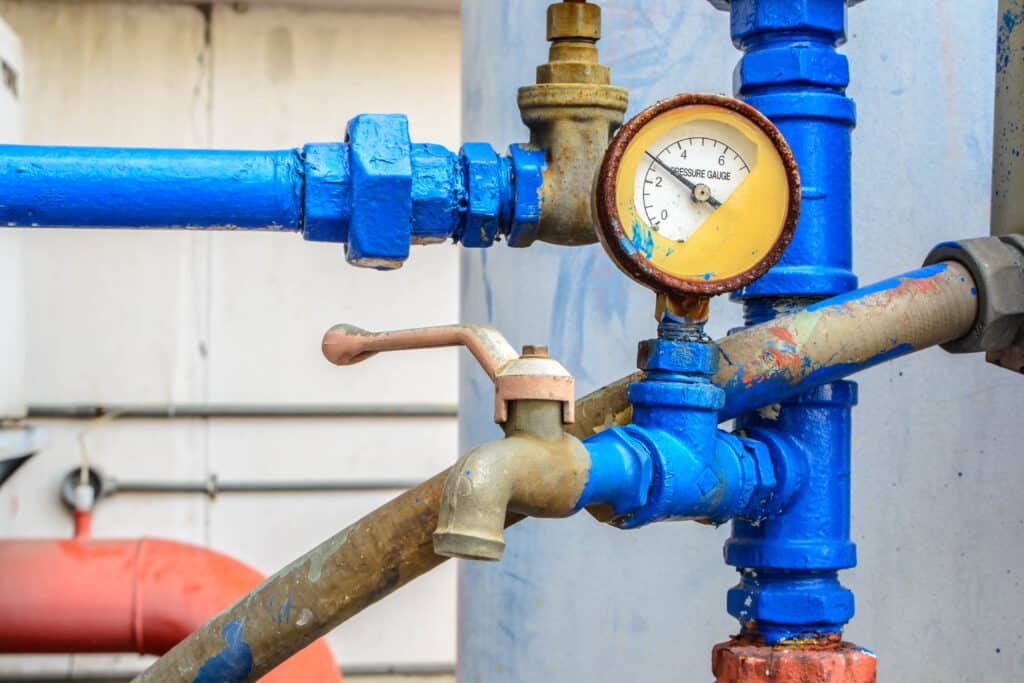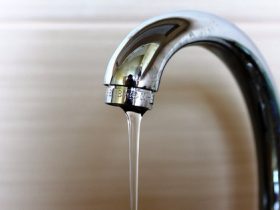Simple Processes to Boost Low Water Pressure in Your Home
Simple Processes to Boost Low Water Pressure in Your Home
Blog Article
What are your thoughts and feelings on 10 Reasons for Low Water Pressure in Your House?

Low water stress in your house can be an irritating issue, affecting whatever from showering to washing dishes. If you're experiencing weak water flow, there are numerous feasible causes and services to discover. In this overview, we'll go over typical reasons for low water stress and sensible actions to resolve the problem effectively.
Intro to Low Water Stress
Low water stress occurs when the flow of water from your taps, showers, and other components is weaker than typical. This can make daily tasks much more tough and much less reliable. Understanding the sources of low water stress is critical to finding the appropriate remedy.
Typical Sources Of Low Tide Stress
Pipe Obstructions
Over time, pipes can come to be blocked with mineral deposits, sediment, or debris, limiting the flow of water. This is a common issue in older homes with galvanized steel pipelines.
Deterioration
Rust within pipes can result in leakages and minimized water pressure. Corrosion buildup can tighten water circulation, particularly in maturing plumbing systems.
Faulty Stress Regulators
Pressure regulatory authorities are in charge of maintaining constant water pressure in your house. If they malfunction, it can lead to low tide stress or uneven circulation throughout your home.
Local Supply Of Water Issues
In some cases, the trouble exists outside your home. Municipal water system concerns, such as main line leaks or maintenance job, can momentarily reduce water stress in your location.
Just How to Identify Low Water Stress
Checking Faucets and Components
Beginning by examining the water pressure at various faucets and components throughout your home. If the concern is isolated to details areas, it might indicate local troubles.
Evaluating Pipelines
Check visible pipes for signs of leakages, deterioration, or obstructions. Pay attention to any unusual noises, such as knocking or rattling pipelines, which can show problems within the plumbing system.
Consulting with a Plumber
If you're unable to identify the root cause of low water stress, think about hiring a professional plumber to conduct an extensive assessment. They can recognize underlying issues and recommend ideal options.
Do It Yourself Solutions to Take Care Of Low Water Stress
Cleaning Aerators and Showerheads
Natural resources can accumulate in aerators and showerheads, lowering water flow. Eliminate and clean up these components frequently to improve water pressure.
Flushing Water Heater
Sediment accumulation in the water heater can restrict circulation and decrease performance. Purging the container periodically assists remove sediment and maintain ideal performance.
Checking Stress Regulator
Make sure that the pressure regulator is functioning appropriately. Readjusting or changing the regulatory authority can help recover appropriate water stress throughout your home.
Cleaning Clogs in Pipeline
For minor clogs, try utilizing a plumbing snake or chemical drain cleaner to clear blockages in pipes. Beware when using chemicals and comply with safety standards.
When to Call a Professional Plumber
If DIY initiatives stop working to solve the issue or if you think substantial plumbing problems, it's finest to look for help from a licensed plumber. They have the know-how and devices to address intricate issues securely and efficiently.
Safety Nets to Preserve Water Pressure
Regular Upkeep
Arrange routine maintenance for your plumbing system to stop concerns such as deterioration, leakages, and obstructions. Dealing with minor troubles early can aid avoid even more significant fixings in the future.
Installing a Stress Booster
Think about mounting a pressure booster pump to enhance water stress in locations with constantly low flow. This can be especially helpful for multi-story homes or buildings with high-demand fixtures.
Tracking Water Usage
Bear in mind water use practices and prevent ill-using the plumbing system. Basic changes, such as staggering showers and washing tons, can help keep sufficient water stress.
Verdict
Handling low water stress can be irritating, yet identifying the underlying reasons and executing suitable services can recover optimal flow throughout your home. Whether it's cleaning up aerators, evaluating pipelines, or speaking with a plumber, taking positive actions can make sure a steady supply of water for your daily requirements.
HOW TO FIX LOW WATER PRESSURE IN YOUR HOUSE (EXPERT GUIDE)
The morning shower lacking any real pressure? Bathtub taking hours to fill? Or maybe you’re dissatisfied with the inadequate performance from your combi boiler?
Then you, like millions of others across the UK, might be experiencing low water pressure.
Fortunately, the good news is that you don’t have to continue living this way. The cause of low water pressure in the home is often quite simple, and you may not even require a plumber to fix the problem.
What causes low water pressure in the house?
If you are experiencing issues with water pressure throughout your home, then you may have one of the problems outlined below.
Most of these problems can be fixed quite easily, but for others, you may need to contact a plumber.
Obstructed Shutoff Valve
If you’ve just bought a new home or recently had building work conducted on your property, there is a chance that your water valves were not fully opened.
If the water valve is partially closed, then you may be restricting the amount of water entering your home. To fix this, simply ensure the valve is fully open.
If the valve appears fully open but you are still encountering reduced water pressure, then the valve may be broken. If this is the case, do not under any circumstances try to fix it without proper training.
Often found under your kitchen sink, a water valve will usually look like a bright yellow handle.
Again, if you believe the water valve is broken, contact a plumber immediately.
Leaks in Your Water Pipes
Leaks are the worst-case scenario when it comes to low water pressure.
If the water pipes are damaged, then this will cause low water pressure, as not all the water will make it to your taps.
After you’ve checked to see if the valve is fully open, you can conduct a leak check of your home. Now, this may seem scary, but it is actually quite simple.
Clogged Water Pipes
Clogged water pipes are one of the most common causes of low water pressure.
These clogs usually build-up when your home is supplied water via iron pipes. Iron is particularly vulnerable to rusting which can then break off and cause an obstruction within your system. You also face the problem of things like dirt, gravel or sand entering creating mineral deposits which further block water flowing from the mains water supply.
Unfortunately, if you suspect that clogged pipes may be restricting your water supply, then you will need to contact a plumber.
In this situation, you will either need to have your pipes removed and cleaned or in more severe cases, you could require a new set of water pipes.
Designer Taps
Designer taps look fantastic, but are they built to be efficient in your plumbing system? Modern taps are built for modern homes and they often have lower flow rates that are specifically designed for use within high-pressure systems.
Install a Water Pressure Booster Pump
If the issue is simply that the mains water pressure supply is too low, the simplest fix is to invest in a booster pump. Found in homes of all shapes and sizes, booster pumps are a relatively cheap option to add extra pressure to your home.
Designed to increase water pressure by passing water into the pump from your mains supply and then ejecting it into your home water system at a higher pressure, a booster pump is a truly simple and effective solution to increasing water pressure.
https://www.anchorpumps.com/blog/the-plumbers-guide-to-fixing-low-water-pressure/

HOW TO FIX LOW WATER PRESSURE IN YOUR HOUSE (EXPERT GUIDE)
The morning shower lacking any real pressure? Bathtub taking hours to fill? Or maybe you’re dissatisfied with the inadequate performance from your combi boiler?
Then you, like millions of others across the UK, might be experiencing low water pressure.
Fortunately, the good news is that you don’t have to continue living this way. The cause of low water pressure in the home is often quite simple, and you may not even require a plumber to fix the problem.
What causes low water pressure in the house?
If you are experiencing issues with water pressure throughout your home, then you may have one of the problems outlined below.
Most of these problems can be fixed quite easily, but for others, you may need to contact a plumber.
Obstructed Shutoff Valve
If you’ve just bought a new home or recently had building work conducted on your property, there is a chance that your water valves were not fully opened.
If the water valve is partially closed, then you may be restricting the amount of water entering your home. To fix this, simply ensure the valve is fully open.
If the valve appears fully open but you are still encountering reduced water pressure, then the valve may be broken. If this is the case, do not under any circumstances try to fix it without proper training.
Often found under your kitchen sink, a water valve will usually look like a bright yellow handle.
Again, if you believe the water valve is broken, contact a plumber immediately.
Leaks in Your Water Pipes
Leaks are the worst-case scenario when it comes to low water pressure.
If the water pipes are damaged, then this will cause low water pressure, as not all the water will make it to your taps.
After you’ve checked to see if the valve is fully open, you can conduct a leak check of your home. Now, this may seem scary, but it is actually quite simple.
Clogged Water Pipes
Clogged water pipes are one of the most common causes of low water pressure.
These clogs usually build-up when your home is supplied water via iron pipes. Iron is particularly vulnerable to rusting which can then break off and cause an obstruction within your system. You also face the problem of things like dirt, gravel or sand entering creating mineral deposits which further block water flowing from the mains water supply.
Unfortunately, if you suspect that clogged pipes may be restricting your water supply, then you will need to contact a plumber.
In this situation, you will either need to have your pipes removed and cleaned or in more severe cases, you could require a new set of water pipes.
Designer Taps
Designer taps look fantastic, but are they built to be efficient in your plumbing system? Modern taps are built for modern homes and they often have lower flow rates that are specifically designed for use within high-pressure systems.
Install a Water Pressure Booster Pump
If the issue is simply that the mains water pressure supply is too low, the simplest fix is to invest in a booster pump. Found in homes of all shapes and sizes, booster pumps are a relatively cheap option to add extra pressure to your home.
Designed to increase water pressure by passing water into the pump from your mains supply and then ejecting it into your home water system at a higher pressure, a booster pump is a truly simple and effective solution to increasing water pressure.
https://www.anchorpumps.com/blog/the-plumbers-guide-to-fixing-low-water-pressure/
I am very inquisitive about 4 Ways to Troubleshoot Low Water Pressure and I hope you enjoyed reading my blog posting. Are you aware of another individual who is interested in the subject? Take a moment to promote it. Thanks for taking the time to read it.
View Website Report this page